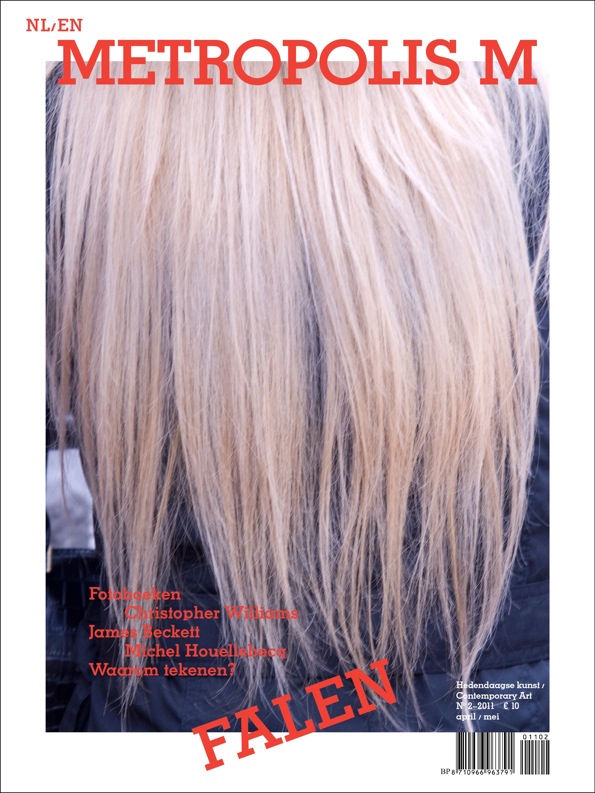Hedwig Houben
Hedwig Houben
In 1972 John Berger, an English critic, painter and, more notably perhaps, author (who won the Booker Prize that same year), created a four part television series for the BBC called Ways of Seeing. The script for the show later became the book of the same title, a well-acknowledged popular classic that, for all its didacticism, still today retains cultural currency. Ways of Seeing, the book, was made by, amongst others, Berger himself, Mike Dibb, the producer of the show, and celebrated British graphic designer Richard Hollis. Clearly it is this teamwork in terms of content, writing, and translation from television onto the page – a dynamic in place throughout the project – that managed to ensure Ways of Seeing’s integrity.I guess it’s partially this integrity – for lack of a more befitting noun – that made me think of John Berger when I first watched Hedwig Houben’s (b. 1983) About The Good And The Bad In Sculpture (2009). In this short video by the Dutch artist, the camera holds, quite still, two smooth, white, abstract sculptures, both resting on black, semi-shiny, marbleized pedestals, while a female narrator, presumably the artist, tells us about her struggle to make a ‘good-looking’ sculpture and one that is ‘not’. Doubtless it was the tone that struck the first chord of recognition: in an informative, brutally honest manner, ‘the artist’ explains the intricacies involved in attaining ‘successful’ form, the difficulty in making resolute decisions; she warns of the pitfalls in being overly-careful and the drawbacks of ‘nice curves’. Her instructive approach goes so far as to, at one point, trace corrective lines (weatherman style) on top of the video image in order to illustrate the exact spots where things went wrong. We follow the analysis and the logic to a reasonable conclusion: the artist, troubled by the changes she feels she will have to make, decides to let the whole affair rest, literally abandoning it ‘in the corner of her studio’. Less abandoned but no less ‘placed’ is Eclectic Chique (2008), a large, low-rise pedestal, more a stage really, exhibiting various, one might say good-looking, objects; some on individual pedestals, others leaning or resting in a particularly pleasant arrangement. The sculptures are ‘put together,’ according to Houben, ‘by making use of certain rules for positioning interior objects’. The decorating advice she found in interior magazines and on the net read like: ‘Choose one colour to start from’; ‘Create space by leaving things away’; while the term ‘eclectic chique’ referred to a specific style one magazine was promoting. But for Houben it was also an ideal title: ‘For me, it fit perfectly with my installation because of its references to art and design and the conflict between the two.’ As much as Eclectic Chique may be ‘solved’ (appealing, contemporary and indeed chic), Hedwig Houben says she can’t envision ever making any other sculptures. And hasn’t since, except for the ones she uses in her performances: ‘Eclectic Chique changed my approach to my practice and the desire to create a perfect object or image – this “utopian” hope to understand sculpture, image, art, the world and the manufacturability of it. Instead of trying to create these “desired” images, the aim and desire of the attempt and the impossibility of it became much more interesting for me.’But it’s Houben’s Six Possibilities For A Sculpture II (2010) which manages to bring the several components of her practice until now into a weightier playfulness. In this piece, Houben begins her lecture (standing this time), holding up a geometrical lump of grey clay, a scale model for a work she has in her studio. She delves into a discussion on how this work was used on various occasions and how each time it afforded different contexts and brought with it different problems. About halfway through the talk, Houben starts to sing her words in a high-pitched, somewhat atonal, completely improvised rendition of herself. Continuing without missing a beat, her now-lyrical explanations are mirrored by her working and kneading of the clay, making the whole even more absurd. Intentional or not, this performance can be seen as an update to John Baldessari’s video work Baldessari Sings LeWitt, in which the artist, seated at a table, sings LeWitt’s 35 sentences on conceptual art. Much like Baldessari’s position, Houben’s contains a similar level of sweet mockery and homage. Unlike the older artist, hers is not directed to someone in particular but to making in general. Maxine Kopsa is associate editor of Metropolis M www.hedwighouben.nl
Maxine Kopsa



















